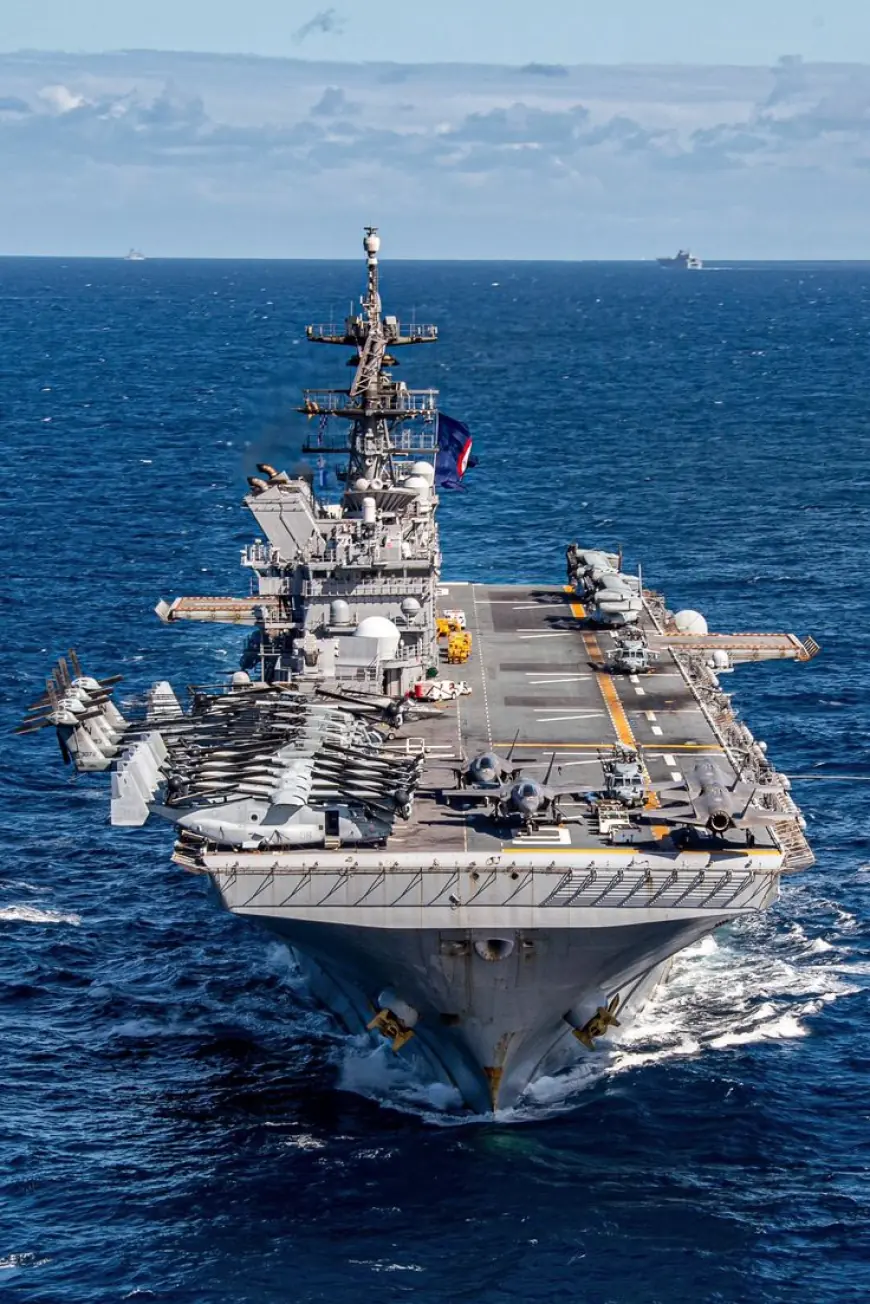10 Essential Navy Current Affairs for 2025 Shaping the Future of Maritime Security
As the seas become more contested and the maritime domain evolves, navies around the globe are upgrading their doctrines, fleets, and strategies.

In 2025, the world’s oceans are not just vast frontiers of exploration and commerce they are pivotal battlegrounds for strategic influence, technological supremacy, and global security. The naval landscape is undergoing a rapid transformation, driven by shifting geopolitics, cutting-edge technologies, and climate change. Below are the 10 Essential Navy Current Affairs for 2025 that stand out and demand close attention.
1. Rise of Unmanned Naval Warfare
Unmanned Surface Vehicles (USVs) and Autonomous Underwater Vehicles (AUVs) have transitioned from experimental prototypes to operational assets. Navies like the U.S., China, and the U.K. are now incorporating swarms of autonomous systems into their fleets to enhance surveillance, mine detection, and even combat missions—marking a major shift in naval warfare doctrine.
2. Quad Naval Cooperation Intensifies
The QUAD alliance—comprising the United States, India, Japan, and Australia—has deepened its maritime cooperation. The 2025 Exercise Malabar saw the deployment of joint task forces with enhanced interoperability, aimed at ensuring a free and open Indo-Pacific amid rising tensions in the South China Sea.
3. Nuclear Submarine Expansion
Nuclear-powered submarines (SSNs) are becoming strategic assets beyond the traditional nuclear triad. In 2025, the U.K. launched its first Astute-class replacement, while Australia, under the AUKUS pact, initiated construction of its first nuclear submarines, reshaping deterrence in the Indo-Pacific.
4. Green Navies and Sustainable Power
Amid climate change challenges, major navies are embracing sustainability. The Royal Netherlands Navy now operates hybrid-electric frigates, and the Indian Navy launched its first solar-assisted patrol vessel. These moves not only reduce carbon footprints but also extend operational range and reduce logistics burdens.
5. AI Integration in Command Systems
Artificial Intelligence (AI) is transforming naval decision-making. In 2025, AI-based combat management systems were fully deployed on U.S. Zumwalt-class destroyers and Indian Navy’s INS Vikrant, enabling faster threat identification, decision simulation, and multi-domain coordination.
6. China’s Maritime Militia in the Spotlight
China’s deployment of a “maritime militia” made up of civilian fishing vessels operating under military command has raised global alarm. In 2025, incidents near the Philippines and Vietnam drew international criticism and prompted new rules of engagement from ASEAN and allied forces.
7. Cybersecurity Breaches and Naval AI Wars
A cyber breach in early 2025 temporarily disabled radar systems aboard a French Navy frigate in the Red Sea, allegedly by state-sponsored hackers. Naval cybersecurity has now become a top-tier priority, with NATO launching a dedicated Cyber Maritime Defense Taskforce.
8. Arctic Naval Race Heats Up
With the Arctic ice receding, 2025 has seen increased naval patrols in the region. Russia expanded its Northern Fleet bases, while the U.S. and Canada launched joint icebreaker patrols. The Arctic is fast becoming a strategic hotspot for energy security and naval control.
9. Naval Drone Swarms Tested in Combat
For the first time in 2025, swarms of naval drones were used in a real-world operation against piracy in the Gulf of Aden. Coordinated from a single mothership, the drones provided real-time surveillance, intercepted communications, and neutralized threats—without human casualties.
10. India’s Maritime Silk Counter Strategy
India launched the "SAGAR-Plus" (Security and Growth for All in the Region) program to counter China’s Belt and Road maritime influence. In 2025, this included the establishment of logistics bases in Sri Lanka, Mauritius, and Oman—boosting India’s blue-water capabilities.
The Global Impact
These current affairs are not isolated developments—they are interconnected elements of a fast-changing maritime world. Nations are not only securing their coasts but also asserting influence in disputed waters, pushing the boundaries of naval technology, and redefining rules of engagement on the high seas.
For stakeholders—from defense policymakers and industry leaders to naval personnel and strategic analysts—keeping abreast of these changes is critical. The year 2025 marks a threshold where maritime power is being redefined by innovation, partnerships, and unpredictability.
Conclusion
Naval strength in 2025 is no longer measured solely by the size of fleets but by the synergy of technology, strategy, and alliances. The 10 Essential Navy Current Affairs for 2025 reveal a domain undergoing unprecedented transformation. As tensions simmer and waters become ever more contested, navies are evolving to secure not just national interests but global maritime stability.
What's Your Reaction?
 Like
0
Like
0
 Dislike
0
Dislike
0
 Love
0
Love
0
 Funny
0
Funny
0
 Angry
0
Angry
0
 Sad
0
Sad
0
 Wow
0
Wow
0


















































